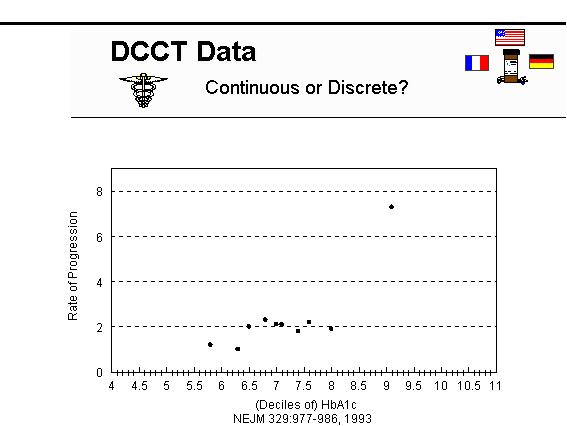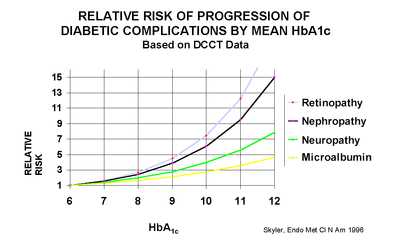Hemoglobin A1c

versus

- Hemoglobin A1c
(HbA1c) is the sugarization or "Stickiness-index"
which measures the percentage of hemoglobin
- a
protein, sitting innocently within the membrane-protected
environment of the red blood cell, whose function it is
to bind O2 in
the lungs and release it in the tissues - which is
covalently stuck to glucose (maple
syrup)
- Correlates virtually linearly
with the level and duration (average) of glucose concentration over the preceding
three months or so:-
- 60 mg/dl <=>
4%
90
mg/dl <=> 5%
120 mg/dl<=>
6%
150 mg/dl<=>
7%
180 mg/dl<=>
8%
210 mg/dl<=>
9%
240 mg/dl<=>
10%
270 mg/dl<=>
11%
300 mg/dl<=>
12%
330 mg/dl<=>
13%
360 mg/dl<=>
14%
390 mg/dl<=>
15%
- Correlates with the
pathophysiology glycosylation of (glucose-stickiness to) proteins in the vasculature
- Correlates with small-vessel
complications as glycosylated proteins cause more
obstruction to red-cell flow in smaller caliber arteries
than in larger caliber arteries
- Target is an A1c of 7% Hemogobin
sugarization with action suggested if the Hemoglobin
sugarization exceeds 8%
- Correlates with the life span of
the red cell and is therefore dependent on a normal (3
month or so) red-cell survival
(Home Page
Reload The National
Diabetes Center Frames )

